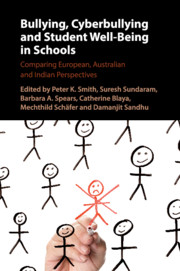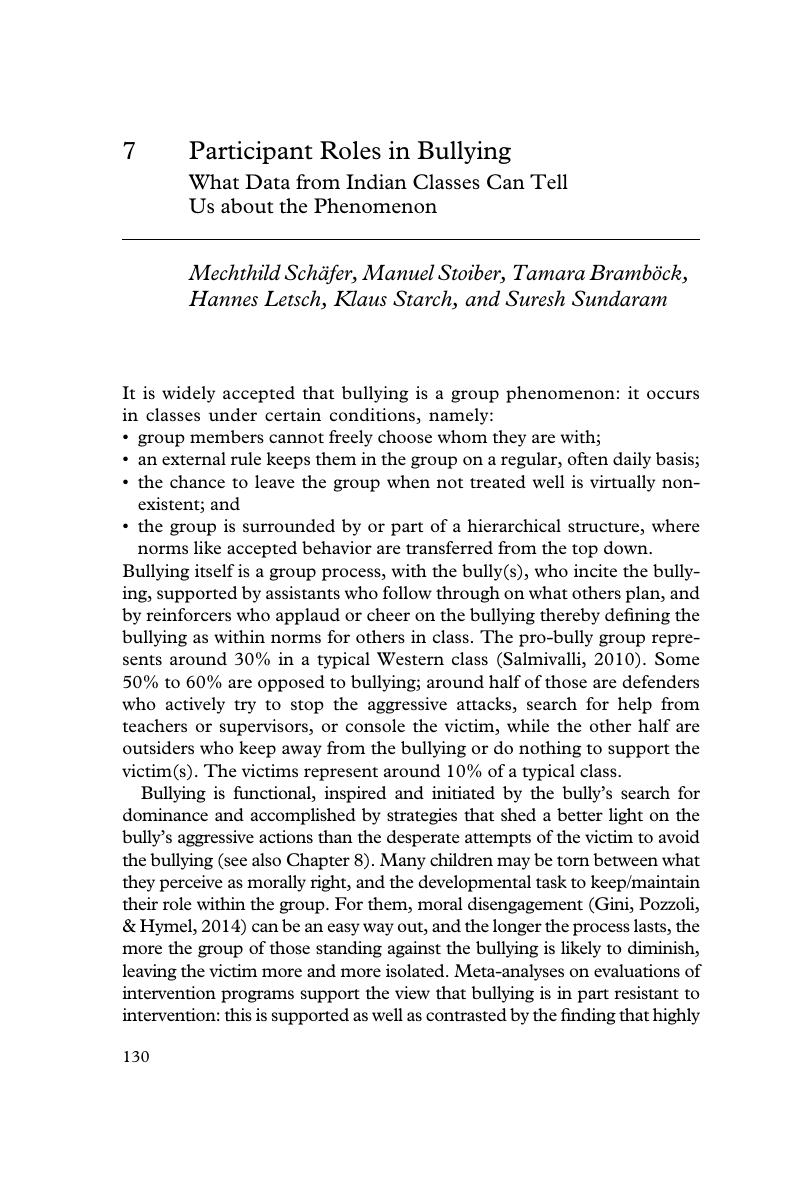 Bullying, Cyberbullying and Student Well-Being in Schools
Bullying, Cyberbullying and Student Well-Being in Schools Book contents
- Bullying, Cyberbullying and Student Well-Being in Schools
- Bullying, Cyberbullying and Student Well-Being in Schools
- Copyright page
- Contents
- Figures
- Preface
- Part I Issues in Studying Cross-National Differences
- Part II Comparative Data on Bullying
- 5 Cyberviolence and Cyberbullying in Europe and India
- 6 Cyberbullying in Higher Education in India and France
- 7 Participant Roles in Bullying
- 8 Bullying, Defending and Victimization in Western Europe and India
- 9 Defining the Relationship between Risk-Taking and Bullying during Adolescence
- Part III Working with Students and Teachers
- Part IV Commentaries from North America
- Index
- References
7 - Participant Roles in Bullying
What Data from Indian Classes Can Tell Us about the Phenomenon
from Part II - Comparative Data on Bullying
Published online by Cambridge University Press: 10 May 2018
- Bullying, Cyberbullying and Student Well-Being in Schools
- Bullying, Cyberbullying and Student Well-Being in Schools
- Copyright page
- Contents
- Figures
- Preface
- Part I Issues in Studying Cross-National Differences
- Part II Comparative Data on Bullying
- 5 Cyberviolence and Cyberbullying in Europe and India
- 6 Cyberbullying in Higher Education in India and France
- 7 Participant Roles in Bullying
- 8 Bullying, Defending and Victimization in Western Europe and India
- 9 Defining the Relationship between Risk-Taking and Bullying during Adolescence
- Part III Working with Students and Teachers
- Part IV Commentaries from North America
- Index
- References
Summary

- Type
- Chapter
- Information
- Bullying, Cyberbullying and Student Well-Being in SchoolsComparing European, Australian and Indian Perspectives, pp. 130 - 145Publisher: Cambridge University PressPrint publication year: 2018
References
- 2
- Cited by


